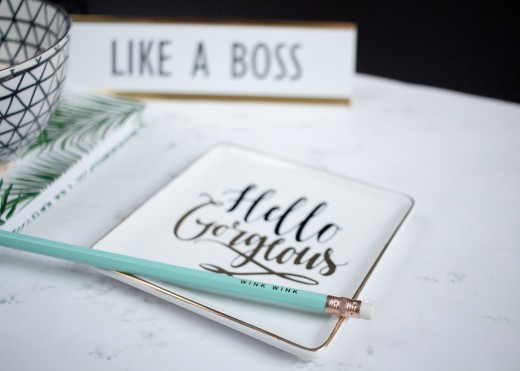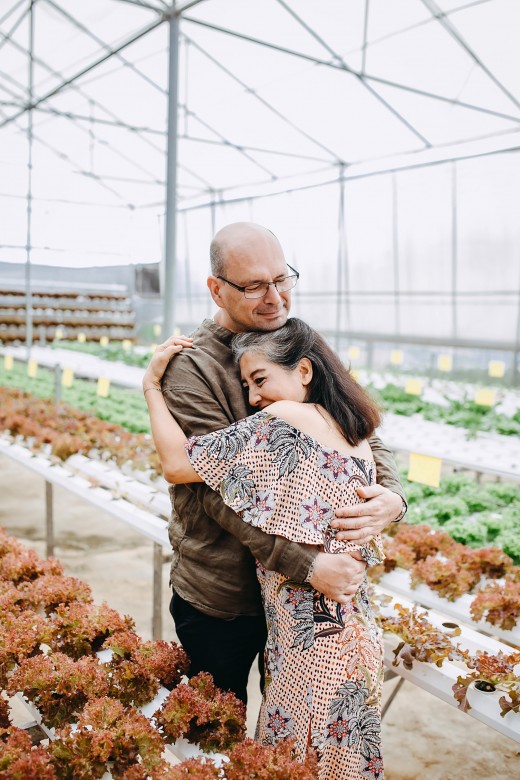How to Find Your and Your Spouse's Love Language

What Are the 5 Love Languages?
What are the love languages? The love languages were innovated and brought to life through Dr. Gary Chapman’s book “The Five Love Languages”. There are several versions of this book out now, but the love languages discuss how love partners receive and give love. Love takes many forms, and they are communicated in unique ways. What is cool about these languages is that you can like certain ones at some level, but ultimately one will be your most preferred way to receive love, as well as one in which you show it.
If, for instance, you show love in one way, but your spouse prefers a different way, there can be conflicts with this interaction. You could be thinking “I’m showing him I love him by doing this, why can’t he see that I love him?!”. On the flip side, the husband could be thinking: “I appreciate what she’s doing, but I am not really feeling loved by that”. So, what do you do?
Go over what the common 5 love languages are, read their descriptions intently, and discover which one resonates most with you. Let’s go over in detail what the 5 love languages are, according to Dr. Chapman:

Words of Affirmation
This language is literally telling your spouse that you love them with your words. The words of affirmation could be saying “I love you”, it also could be in forms of compliments. By complimenting your spouse, you are affirming them and showing them love. You can affirm your spouse by saying things like:
“I’m proud of you”
“I like your outfit”
“You are beautiful”
“You are so strong”
“I appreciate you”
Someone who prefers this love language loves to be lifted up and hear words of love from their spouse. Hearing the words from their spouse fills up their “love tank” and makes them feel loved most. To this person, there are no better ways to feel loved than hearing the words of love. This language translates love the most; it helps that person to be more attracted to their spouse and strengthens the relationship between them.
Often times, those who prefer words of affirmation will give others affirmation, too. They will be quick to give compliments, encouragement, or edifying someone. This person values words of affirmation and will give it to others. They will be more likely to tell their spouse they love them directly, and tell their husband/wife that they are beautiful/handsome/sexy/strong/etc. These behaviors are little hints that this person prefers the love language of words of affirmation.

Quality Time
The love language of quality time is really defined by the word “quality”. When someone has genuine quality time with their spouse, they are focused completely on that time with them. Someone who prefers quality time feels loved the most because their spouse is devoting their time and energy to them. To this person, they feel special because it is quality time spent for the purpose of strengthening their relationship. Quality time can be spent with just the couple, or it can be out where there are many people. The point is to be focused on each other and for the person to feel that their spouse is really focusing and paying attention to them. Quality time would not be going to the movies, a concert, or a show together. These are fun activities but the focus is on what the couple is doing, not on the specific spouse looking for quality time. The main picture here is: Focus on the spouse. Here are some examples of real quality time to spend with a spouse who feels this love language most:
Sitting on the couch one on one together, talking.
Building a puzzle together.
Playing a card game together, one on one.
Carving a pumpkin together.
Watch the sunset together, alone.
A common theme with these quality time examples is that the couple is alone together, focusing on their relationship. They are doing activities together, but in such a way that they can converse, and work together towards a common goal. Quality time can be fun, meaningful, and/or romantic. Quality time is in an environment where the couple is not restricted or have any barriers to talking to one another or comfortably be around each other. If a couple is at a concert or the movies, there is limited interaction and comfortability. When a couple is doing something fun together with just the two of them, the level of quality goes up.

Acts of Service
Someone who feels loved the most through acts of service wants to see the action of love. Love is an emotion but it is also shown through actions. This person does not want their spouse to be a servant or slave, but they love when their spouse does things for them on their own. Particularly, they feel most loved when their spouse does tasks or chores for them without being prompted or asked. For example, when a husband cleans the bathroom or does the dishes without his wife asking him to, the wife feels love and appreciation. When someone loves having acts of service done, they are usually quick to do acts of service for their partner because of how much it means to them. Here are some examples of solid acts of service between partners:
Doing laundry, folding it, and putting it away.
Making their spouse coffee and presenting it to them.
When a wife has a long day at work, and the husband picks up the kids from school, brings them home, and helps them with homework.
When a husband makes dinner for his wife.
The husband/wife takes the other’s car for an oil change, fills it with gas, washes it and vacuums it out.
These acts of service are unprompted and not asked by the spouse. This love language translates as: “My husband/wife needs this done, and would really appreciate it if I do this for him/her”. The person who prefers this love language feels loved because their spouse went out of their way to do this act for them, knew the person needed it to be done, and did it without being asked. These actions show kindness, selflessness, and unconditional love. This language shows love with actions.

Physical Touch
Physical touch is more than just sex. This love language is another way of showing love through action, and that is simply by being affectionate. The spouse who loves this language most desires being close with their partner. They feel loved most when they are touching or being touched by their spouse. This person is saying “make me feel loved by touching me”. Again, this does not always have to be sexual. Touch can be done in the most simple and small ways. When someone touches their spouse, it fills up their “love tank”, and touch is often returned. Here are examples of physical touch:
Hugs
Holding hands
Sitting close and right next to each other
Putting your arm around your spouse
Cuddling laying in bed
All of these ways of physical touch can be affectionate and sensual; yes they can be sexual also. The partner feels loved being touched by the one they love. The small ways of touch can give the “tingly feeling” with rushing emotions and hormones. Someone who loves physical touch can be a great sex partner, but mostly it is about love and feeling loved by their spouse.

Gifts
The final love language is about presenting a spouse with a thought of love. Giving gifts is not just about being materialistic, but showing a spouse “I love you and I thought of you when I saw this”. To someone who prefers gifts as their love language, they feel loved the most from their spouse when their spouse thinks of them through a gift. When a spouse receives a gift, they are thinking “he/she saw this and thought of me, they went out of their way and got this for me to say ‘I love you’”. These are some perfect examples of telling a spouse “I love you” through gifts:
Leave a surprise love note in the bathroom or in their lunch for them to find.
When on a trip, find a small keep sake specific to where you are to bring back to your spouse.
When out shopping, buy something your spouse has been saying that they wanted.
Bring your spouse flowers.
Make a scrap book or collage of your relationship with your spouse and give it to them.
Gifts do not have to be materialistic or extravagant; rather they can be meaningful to your relationship together. Sometimes gifts can seem like acts of service by bringing flowers or making something, but the person loves it most when you think of them and present it to them. It is about the thought and this person is hearing “I love you” when you present them with this thoughtful gift.
So, it is pretty fun and cool to read through these and see which one applies to you. As discussed before, each person usually receives one love language the most. You may also find by reading these that you give one of these languages the best. When you and your spouse read through these together, you can rate each one and find out which love language speaks to you the most. After you find your language, play a guessing game with your spouse as to which language is mot relatable to them. Make a conscious and fun effort to speak your spouses love language daily. Know why the language resonates most with them. When you fill your spouses love tank up with their language, they are likely to do the same for you in return. Speak each other’s language and help build your bond and love together.
What is your love language?
Find Each Other's Love Language
So, it is pretty fun and cool to read through these and see which one applies to you. As discussed before, each person usually receives one love language the most. You may also find by reading these that you give one of these languages the best. When you and your spouse read through these together, you can rate each one and find out which love language speaks to you the most. After you find your language, play a guessing game with your spouse as to which language is mot relatable to them. Make a conscious and fun effort to speak your spouses love language daily. Know why the language resonates most with them. When you fill your spouses love tank up with their language, they are likely to do the same for you in return. Speak each other’s language and help build your bond and love together.








